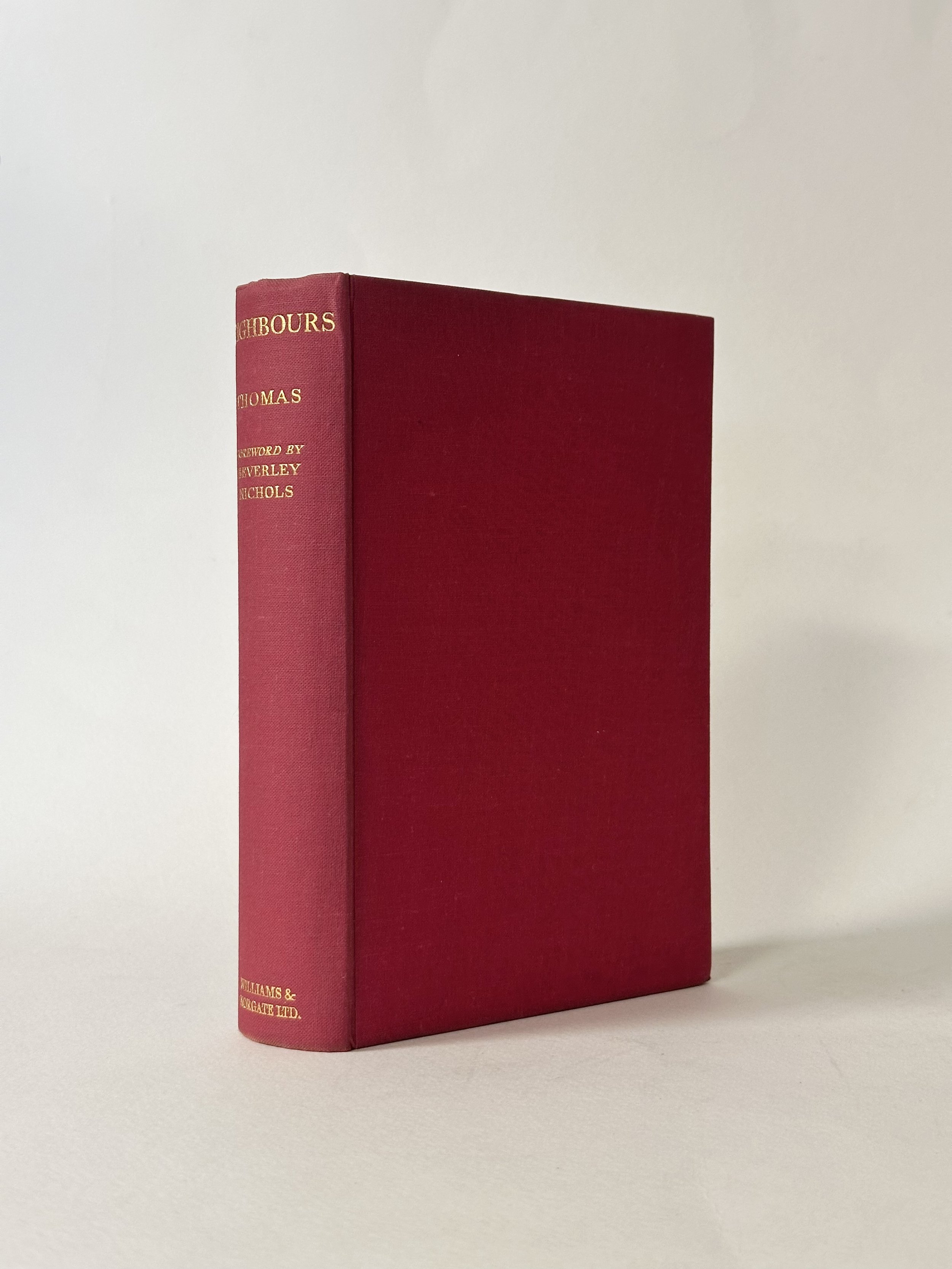 Image 1 of 3
Image 1 of 3

 Image 2 of 3
Image 2 of 3

 Image 3 of 3
Image 3 of 3




THOMAS, George. Neighbours
THOMAS, George. Neighbours. With a foreword by Beverley Nichols. London: Williams & Norgate. 1935. 8vo. First edition. Publisher’s cherry red cloth lettered in gilt to the spine, in the splendid dust jacket designed by Margaret Macadam. A smart example, the cloth clean and bright, very gently bumped along the spine head and tail, the topstain a trifle faded. The binding tight and very gently rolled, the contents clean and bright throughout. The dust jacket unclipped (7s 6d net) and complete, the spine panel toned and a little scarred, the corners and tips a touch rubbed and slightly nicked, but a handsome copy.
The author’s first novel after his debut memoir, A Tenement in Soho. A roman-à-clef, this builds on that memoir, telling of a small community of working-class families living in Crow Court. Nichols states in his foreword, ‘though it may not depress, it appals. not with a sudden chilling of the blood nor a quick creeping of the flesh, but with a gradual embitterment of the spirit. For here is the very smell of poverty’. The terrific dust jacket is by Margaret Macadam, much of whose work had been uncredited until the discovery of her archive in 2016. She produced a generally small but exquisite portfolio of commercial art, and only a small handful of dust jackets, most notably for Agatha Christie’s pseudonymous Giant’s Bread, published in 1930 under her Mary Westmacott nom-de-plume. Her style here and in her other work is not dissimilar to the work of Edward McKnight-Kauffer, who was a known influence on Macadam. Scarce.
THOMAS, George. Neighbours. With a foreword by Beverley Nichols. London: Williams & Norgate. 1935. 8vo. First edition. Publisher’s cherry red cloth lettered in gilt to the spine, in the splendid dust jacket designed by Margaret Macadam. A smart example, the cloth clean and bright, very gently bumped along the spine head and tail, the topstain a trifle faded. The binding tight and very gently rolled, the contents clean and bright throughout. The dust jacket unclipped (7s 6d net) and complete, the spine panel toned and a little scarred, the corners and tips a touch rubbed and slightly nicked, but a handsome copy.
The author’s first novel after his debut memoir, A Tenement in Soho. A roman-à-clef, this builds on that memoir, telling of a small community of working-class families living in Crow Court. Nichols states in his foreword, ‘though it may not depress, it appals. not with a sudden chilling of the blood nor a quick creeping of the flesh, but with a gradual embitterment of the spirit. For here is the very smell of poverty’. The terrific dust jacket is by Margaret Macadam, much of whose work had been uncredited until the discovery of her archive in 2016. She produced a generally small but exquisite portfolio of commercial art, and only a small handful of dust jackets, most notably for Agatha Christie’s pseudonymous Giant’s Bread, published in 1930 under her Mary Westmacott nom-de-plume. Her style here and in her other work is not dissimilar to the work of Edward McKnight-Kauffer, who was a known influence on Macadam. Scarce.
